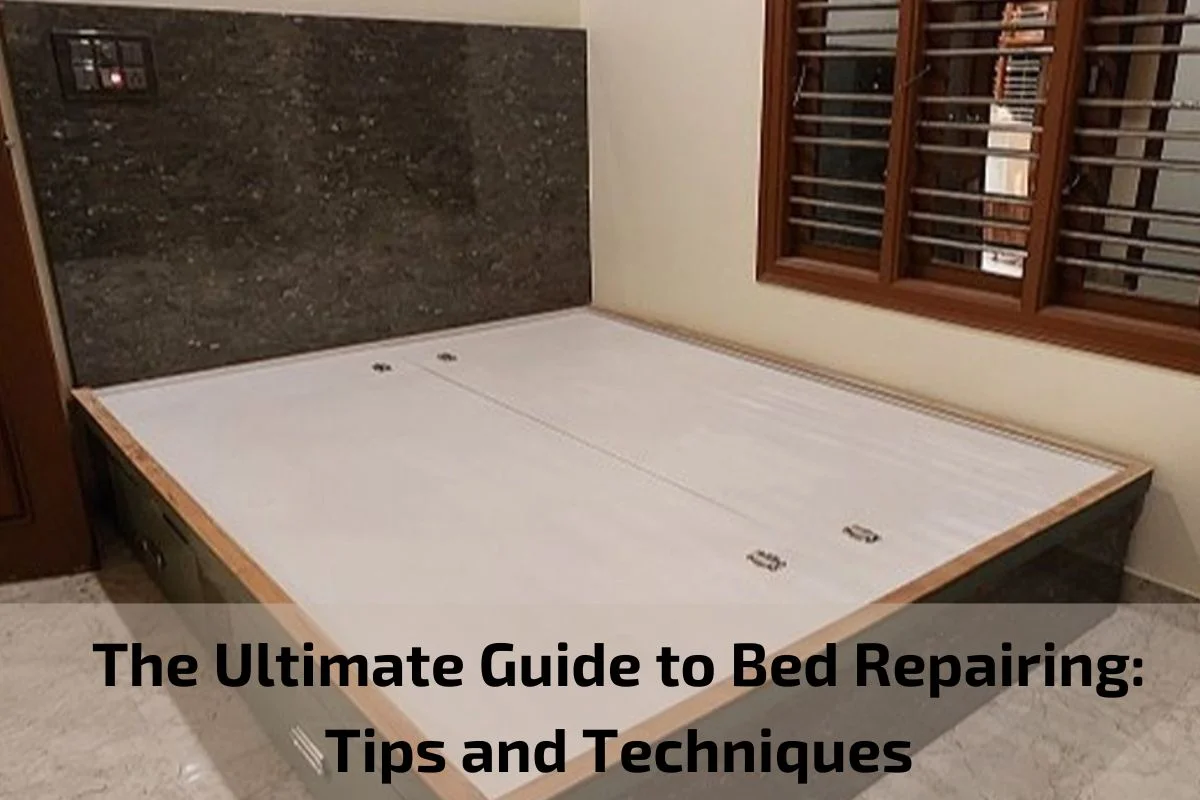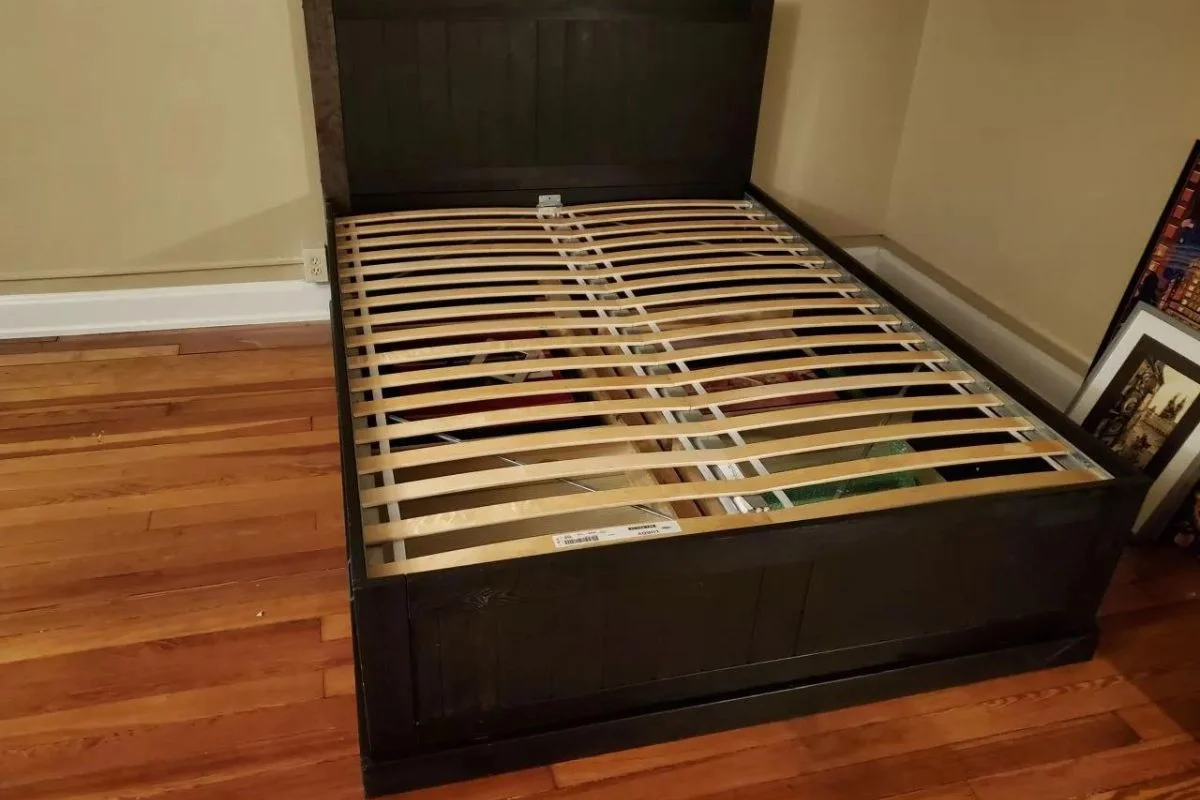Beds are essential pieces of furniture that play a crucial role in our daily lives, providing us with a place to rest, relax, and recharge. However, over time, beds can develop wear and tear, resulting in various issues that affect their comfort and functionality. From squeaky frames and broken slats to sagging mattresses and torn upholstery, these issues can disrupt our sleep and diminish our overall comfort.
But fear not! With the right knowledge and techniques, you can tackle bed repairing like a pro, restoring your bed to its former glory and ensuring nights of restful sleep. In this ultimate guide to bed repairing, we’ll explore a variety of tips and techniques for addressing common bed issues, covering everything from minor touch-ups to major structural repairs.
Whether you’re dealing with a creaky bed frame, a lumpy mattress, or a torn headboard, this guide has you covered. Get ready to roll up your sleeves and learn how to revive your bed and enhance your sleep quality. With the tips and techniques provided, you’ll be equipped to tackle bed repairs with confidence and skill.
So, whether you’re a DIY enthusiast looking to save money on professional repairs or simply want to extend the lifespan of your bed, this guide is here to help. Let’s dive in and discover the ultimate secrets to bed repairing.
Benefits of DIY Bed Repairing vs. Professional Services
When faced with bed repair needs, homeowners often grapple with the decision of whether to attempt DIY repairs or enlist the help of professional services. Both options have their merits, and understanding the benefits of each can help individuals make an informed choice. Here are the advantages of DIY bed repairing compared to professional services:
Cost-Effectiveness:
DIY Bed Repairing: One of the primary benefits of DIY bed repairing is its cost-effectiveness. By opting for DIY repairs, homeowners can save money on labor costs and potentially expensive professional services. Additionally, DIY repairs often require minimal investment in tools and materials, making them a budget-friendly option.
Professional Services: While professional bed repair services offer expertise and convenience, they typically come with a higher price tag. Hiring a professional technician can incur labor and service fees, which may be cost-prohibitive for some homeowners.
Control and Flexibility:
DIY Bed Repairing: Repairing beds oneself grants homeowners full control over the repair process. DIY enthusiasts can choose the materials, techniques, and timeline that best suit their needs and preferences. Moreover, DIY repairs offer flexibility, allowing individuals to work on repairs at their own pace and schedule.
Professional Services: While professional services provide expertise and efficiency, they may limit homeowners’ control over the repair process. Individuals may need to rely on the availability and schedule of the repair technician, and they may have less input into the materials and methods used for the repairs.
Learning and Skill Development:
DIY Bed Repairing: Undertaking DIY bed repairs presents an opportunity for learning and skill development. Individuals can gain valuable experience and knowledge by tackling repairs themselves, which can be applied to future projects and home maintenance tasks. DIY repairs offer a hands-on learning experience that fosters confidence and self-sufficiency.
Professional Services: While professional services offer expertise and quality assurance, they may not provide the same learning opportunities as DIY repairs. Individuals may miss out on the chance to develop repair skills and knowledge by outsourcing the work to professionals.
Personal Satisfaction:
DIY Bed Repairing: Successfully completing a DIY bed repair can bring a sense of accomplishment and personal satisfaction. Knowing that one was able to restore and improve their bed with their own hands can be immensely rewarding. DIY repairs foster a sense of pride and ownership over the repair process and the resulting outcomes.
Professional Services: While professional services offer convenience and peace of mind, they may not provide the same level of personal satisfaction as DIY repairs. Individuals may lack the sense of pride and fulfillment that comes from completing a repair themselves.
Restoring Beds: Bringing New Life to Old Favorites
Over time, beds can undergo wear and tear, losing their luster and comfort. However, with a little TLC and some restoration efforts, it’s possible to breathe new life into old favorites. Restoring beds not only revitalizes their appearance but also enhances their comfort and functionality, ensuring many more nights of restful sleep. In this section, we’ll explore various techniques and strategies for restoring beds, from refinishing wooden frames to rejuvenating mattresses and cushions. Whether you have an antique bed with sentimental value or a beloved modern piece showing signs of age, restoring your bed can transform it into a cherished centerpiece of your bedroom once again. Let’s dive into the process of bringing new life to old favorites and reclaiming the comfort and beauty of your bed.
Signs You Need Professional Bed Repair
While many bed repair can be tackled with DIY techniques, there are certain signs that indicate it may be time to seek professional assistance. Recognizing these signs can help homeowners address bed problems promptly and effectively, ensuring optimal comfort and safety. Here are some indicators that you may need professional bed repair services:
Complex Structural Damage: If your bed has suffered significant structural damage, such as broken or cracked bed frames, severe wobbling, or compromised support systems, it may require professional intervention. Complex structural issues often require specialized knowledge and equipment to address effectively.
Safety Concerns or Structural Instability: Beds that exhibit signs of instability or pose safety hazards should be inspected by a professional bed repair technician. This includes beds with loose or missing hardware, weakened support beams, or other structural deficiencies that compromise stability and safety.
Irreparable Damage to Mattresses or Upholstery: In some cases, mattresses or upholstery may sustain irreparable damage that cannot be effectively addressed with DIY repairs. This could include extensive sagging, lumps, tears, or other issues that compromise the comfort and integrity of the bed. Professional repair services may offer solutions such as mattress replacement or upholstery restoration to address these issues effectively.
Specialized Repair Needs: Certain types of beds, such as antique or custom-made pieces, may require specialized repair techniques that are beyond the scope of DIY repair methods. If your bed has unique features, materials, or construction methods, it’s advisable to consult with a professional who has experience and expertise in handling similar cases.
Budget-Friendly Solutions for Bed Repairing
Repairing a bed doesn’t have to break the bank. There are several budget-friendly solutions and DIY techniques that homeowners can utilize to address common bed issues without spending a fortune. Here are some cost-effective strategies for bed repairing:
DIY Bed Frame Reinforcement: If your bed frame is wobbly or unstable, consider reinforcing it with simple DIY techniques. You can use additional screws or brackets to secure loose joints and strengthen weak areas. Reinforcing the bed frame can improve stability and prolong its lifespan without the need for professional assistance.
Mattress Topper or Padding: If your mattress has developed sagging or lumps, but is otherwise in good condition, adding a mattress topper or padding can provide an affordable solution. Mattress toppers come in various thicknesses and materials, allowing you to customize the level of comfort and support to suit your preferences.
Upholstery Patching Kits: For beds with torn upholstery or fabric damage, upholstery patching kits can be a cost-effective solution. These kits typically include adhesive patches or fabric glue that can be used to repair tears, holes, or frayed edges. With a little DIY effort, you can restore the appearance of your bed upholstery without the need for professional upholstery services.
Wood Filler and Stain: If your wooden bed frame has scratches, dents, or other surface damage, wood filler and stain can help conceal imperfections and restore its appearance. Wood filler can be used to fill in small gaps or holes, while stain can be applied to match the color of the existing wood finish. This DIY approach can significantly improve the aesthetics of your bed frame at minimal cost.
DIY Mattress Rotation and Flipping: To extend the lifespan of your mattress and minimize sagging, regularly rotate and flip it according to manufacturer recommendations. This simple preventative maintenance technique can help distribute wear and tear more evenly, prolonging the life of your mattress and delaying the need for replacement.
Creative Upcycling: Get creative with upcycling and repurposing materials to address bed repair needs. For example, old blankets or comforters can be repurposed as mattress padding or cushioning, while decorative fabric scraps can be used to patch upholstery damage. By thinking outside the box, you can find innovative and budget-friendly solutions to repair your bed.
Preventative Maintenance Tips to Keep Your Bed in Top Condition
Maintaining your bed in top condition is essential for ensuring a comfortable and restful sleep environment. By implementing preventative maintenance measures, you can prolong the lifespan of your bed and minimize the need for costly repairs or replacements. Here are some tips to keep your bed in optimal condition:
Regular Cleaning: Regularly clean your bed frame, mattress, and bedding to remove dust, dirt, and allergens. Vacuum the mattress and bed frame using a soft brush attachment to remove surface debris, and wash bedding, including sheets, pillowcases, and mattress protectors, on a regular basis to maintain cleanliness and hygiene.
Rotate and Flip Mattress: Rotate and flip your mattress according to manufacturer recommendations to distribute wear and tear evenly and prevent sagging or indentations. This helps maintain the integrity of the mattress and extends its lifespan by ensuring that it wears evenly across all areas.
Check for Signs of Wear and Tear: Periodically inspect your bed for signs of wear and tear, including sagging, lumps, squeaks, or loose joints. Addressing minor issues promptly can prevent them from worsening over time and requiring more extensive repairs. Tighten screws, bolts, or fasteners as needed, and repair or replace damaged components to maintain the structural integrity of the bed.
Use Mattress Protectors: Invest in a high-quality mattress protector to safeguard your mattress from spills, stains, and moisture. A waterproof mattress protector can help prevent liquids from seeping into the mattress and causing damage, prolonging its lifespan and maintaining its hygiene.
Avoid Jumping or Rough Handling: Discourage jumping or rough handling on the bed, as this can cause stress and strain on the mattress and bed frame, leading to premature wear and damage. Teach children to use the bed responsibly and avoid roughhousing to minimize the risk of accidents or damage.
Supportive Bed Foundation: Ensure that your bed is properly supported by a sturdy and supportive foundation, such as a box spring, platform bed frame, or slatted bed base. A supportive foundation helps distribute weight evenly and provides adequate support for the mattress, enhancing comfort and longevity.
Control Temperature and Humidity: Maintain a comfortable and consistent temperature and humidity level in your bedroom to prevent moisture buildup and mold growth, which can damage the mattress and bed frame. Use a dehumidifier or air conditioner to control humidity levels, and ensure adequate ventilation to promote airflow and prevent moisture buildup.
Professional Maintenance: Consider scheduling professional maintenance for your bed, especially if it requires specialized care or repairs. Professional technicians can perform thorough inspections, cleaning, and repairs to keep your bed in optimal condition and address any underlying issues that may arise.
Conclusion
Maintaining your bed in top condition is essential for ensuring a comfortable and restful sleep environment. By implementing preventative maintenance measures such as regular cleaning, inspection for wear and tear, and proper use and handling, you can prolong the lifespan of your bed and minimize the need for costly repairs or replacements.




